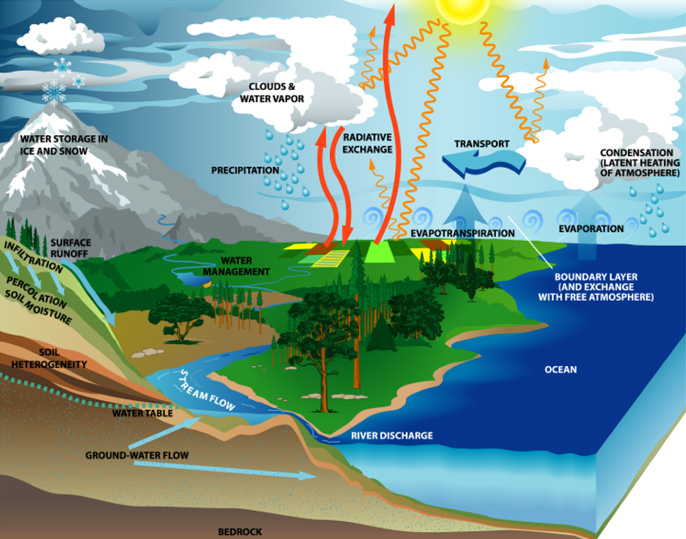Water Conservation starts with YOU!
There is no UN-USED Water on Earth. It has all been
used and re-used and re-cleaned and re-used for millions of years. The speed
at which it is re-cleaned and re-placed into a local resevoir and ready for
your use is the major question.
Home
Contact
Qualifications
We aren't running out of water.
There is just as much water on earth as there ever was. However, if all the
fresh water on Earth was contaminated, then it wouldn't matter if it all ran
out. Death from thirst or death from disease, is still death.
Because there are SO many more
people living so close together, we must be very careful not to contaminate
out drinking water resources. The best way to do that is to use less to contaminate
less, and treat better, to replace valuable resources.
1.
Showers usually use less water than baths. Install a water saving shower head
that uses less than two and 1/2 gallons per minute and saves both water and
energy.
2. If you take a tub bath, reduce the level of water in the tub from the level
to which you customarily fill it.
3. Leaky faucets and faulty toilet fill-up mechanisms should be repaired as
quickly as possible.
4. Check toilets for leaks that may not be apparent. Add a few drops of food
coloring to the tank. Do not flush. If the color appears in the bowl within
a few minutes, the toilet fill or ball-cock valve needs to be adjusted to prevent
the water from overflowing the stand pipe or the flapper at the bottom of the
toilet tank needs to replaced.
5. Reduce the amount of water used for flushing the toilet by installing one
of the following: A new toilet (1.6 gallon); a toilet tank dam; or filling and
capping one-quart plastic bottles with water (usually one is all that will fit
in smaller toilet tanks) and lowering them into the tank of the existing 3.5
gallon or larger toilet. Do not use bricks since they may crumble and cause
damage to the fixture.
6. Try to run the dishwasher with a full load, whenever possible.
7. Avoid running the water continuously for brushing teeth, washing hands, rinsing
kitchen utensils or for cleaning vegetables.
8. Use faucet aerators that restrict flow to no more than 2.2 gallons per minute
to reduce water consumption.
9. Keep a container of drinking water in the refrigerator instead of running
the faucet until the water turns cool.
10. Insulate all hot water pipes to avoid long delays of wasted water while
waiting for the heated water.
11. Ask your city, county, or local government about their programs to conserve
water and how they can help you save water.
Links Abroad


